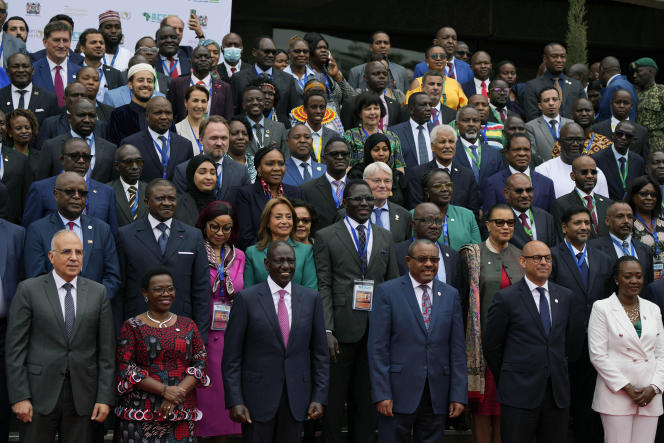( 3 minutes read)
The Summit could generate momentum for a series of key gatherings leading to a UN climate summit starting in November. Prior to that, there is the G20 meeting in New Delhi this weekend.
The landmark African climate summit ended yesterday(Wednesday) after leaders adopted a declaration highlighting the continent’s potential as a green powerhouse. Kenyan President William Ruto vehemently advocated Africa’s switch to clean energy. The continent reels from climate-related disasters, which would have forced the countries to give focused attention to climate change.
Read Also:
The Summit could generate momentum for a series of key gatherings leading to a UN climate summit starting in November. Prior to that, there is the G20 meeting in New Delhi this weekend. The Nairobi declaration calls for a new financing architecture that is responsive to Africa’s needs including debt restructuring and relief. The high cost of financing climate change and other developmental programs has been a concern for Africa. It also asks rich carbon polluters to honor climate pledges to poorer nations and urges world leaders to back a proposed carbon tax on fossil fuel trade, maritime transport, and aviation.
Read Also:
https://trendsnafrica.com/africa-should-speak-on-climate-change-with-one-voice-zambian-president/
The 54-nation bloc is vulnerable to the growing impacts of climate change. The summit focused on calls to unlock investment in clean energy. The summit saw funding pledges worth US$23 billion for green growth, mitigation, and adaptation efforts across the continent, from different sources. The COP28 talks are to be continued in the oil-rich United Arab Emirates in November, where the world will take stock of the inadequate efforts to slash planet-heating emissions.
As climate change accelerates and pressure mounts on companies and countries to give more focus to that, demand for carbon credits has exploded. Cash-strapped African nations want a much bigger share of a US$2-billion market that is forecast to grow five-fold by 2030.
Read Also:
https://trendsnafrica.com/kenya-and-uae-to-hold-hands-to-put-climate-change-agenda-top-most/
Africa only produces 11 percent of the world’s offsets. It also has the planet’s second-largest rainforest and tracts of carbon-absorbing ecosystems like mangroves and peatlands. Kenyan President William Ruto, who hosted the climate summit in Nairobi this week, said Africa’s carbon sinks were an unparalleled economic goldmine.
The UN-endorsed African Carbon Market Initiative, launched at COP27 in November, believes 300 million credits could be generated annually on the continent by 2030 –- a 19-fold increase on current volumes. For Kenya, this would mean more than 600,000 jobs and US$600 million in annual revenue. However, such massive programs need increased financing options at low cost.





